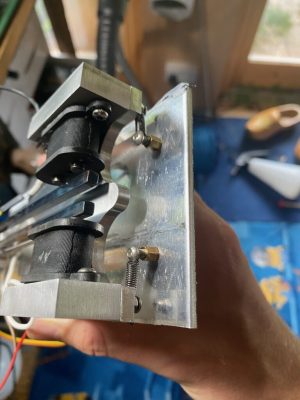Although new electric motor types are still being invented, the basic principle of an electric motor has changed little in the past century-and-a-half: a stator and a rotor built of magnetic materials plus a bunch of strategically-placed loops of wire. But getting even those basic ingredients right took a lot of experimentation by some of the greatest names in physics. Michael Faraday was one of them, and in the process became the first person to turn electricity into motion. [Markus Bindhammer] has recreated Faraday’s experiment in proper 19th century style.
Back in 1821, the very nature of electricity and its relation to magnetism were active areas of research. Tasked with writing an article about the new science of eletromagnetics, Faraday decided to test out the interaction between a current-carrying wire and a permanent magnet, in a setup very similar to [Markus]’s design. A brass wire is hanging freely from a horizontal rod and makes contact with a conductive liquid, inside of which a magnet is standing vertically. As an electric current is passed through the wire, it begins to rotate around the magnet, as if to stir the liquid.
[Markus]’s video, embedded after the break, shows the entire construction process. Starting from rods and sheet metal, [Markus] uses mostly hand tools to create all basic parts that implement the motor, including a neat knife switch. Where Faraday used mercury as the conductive liquid, [Markus] uses salt water – cheaper and less toxic, although it does eventually eat up the brass wire through electrolysis.
While not particularly useful in itself, Faraday’s motor proved for the first time that electric energy could be converted into motion through magnetism, leading to a whole class of ultra-simple motors called homopolar motors. It would be a while before experiments by the likes of Tesla and Ferraris led to modern AC motors. If you don’t like your motors magnetic, you can use electrostatics instead.
Continue reading “Replicating Faraday’s 200-Year-Old Electric Motor”

















